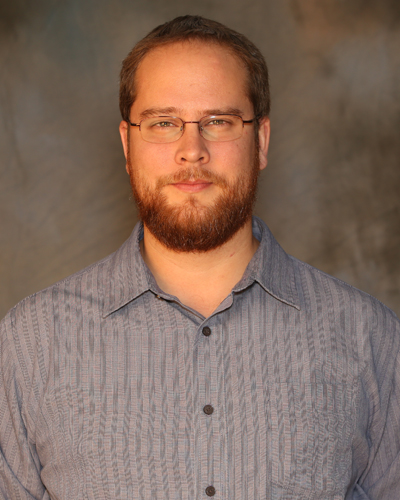Education B.Sc., Biology, University of Central Missouri, Warrensburg, MO, USA, 2005 M.Sc., Environmental Studies, University of Charleston, Charleston, SC, USA, 2008 Ph. D., Coastal Sciences, University of Southern Mississippi, Ocean Springs, MS, USA, 2012 Post Doc Fellowship, Coastal Sciences, University of Southern Mississippi, Ocean Springs, MS, USA, 2014
Research
Dr. Ray’s research is focused on the development of sustainable aquaculture systems and practices. Aquaculture now provides half of the world’s seafood and the industry is growing faster than any other food sector to keep up with rising demand. Dr. Ray is conducting work geared toward ensuring that the industry progresses in an ecologically-friendly manner. His work is relevant to local farmers in Kentucky and throughout the world. Dr. Ray’s research includes repurposing abandoned municipal and agricultural infrastructure, using reclaimed water for fish production, integrated fish and plant production, photosynthetically-driven aquaculture technology, and improving recirculating aquaculture systems technology. One of his foci has been biofloc-based aquaculture technology in which a dense microbial community in the water column breaks down waste and recycles nutrients so that feed efficiency is significantly increased. Dr. Ray has examined water quality, isotope dynamics, nutrient cycling, microbial ecology and management, novel feed formulations, artificial seawater development, and waste remediation techniques. Dr. Ray currently works with tilapia, brackish-water shrimp, paddlefish, and hybrid striped bass; he has plans to work with Australian red claw crayfish and largemouth bass as well in the near future. Recent Publications Refereed: - Ray, A.J., and J.M. Lotz. 2014. Comparing a chemoautotrophic-based biofloc system and three heterotrophic-based systems receiving different carbohydrate sources. Aquacultural Engineering 63: 54-61.
- Ray A.J., Seaborn G., Vinatea L., Browdy C.L., and J.W. Leffler. 2012. Effects of biofloc reduction on microbial dynamics in minimal-exchange, superintensive shrimp (Litopenaeus vannamei) culture systems. Journal of the World Aquaculture Society 43(6): 790-801.
- Ray A.J., Dillon K.S., and J.M. Lotz. 2011. Water quality dynamics and shrimp (Litopenaeus vannamei) production in intensive, mesohaline culture systems with two levels of biofloc management. Aquacultural Engineering 45: 127-136.
- Ray A.J., Seaborn G., Wilde S.B., Leffler J.W., Lawson A., and C.L. Browdy. 2010. Characterization of microbial communities in minimal-exchange, intensive aquaculture systems and the effects of suspended solids management. Aquaculture 310: 130-138.
- Ray A.J., B.L. Lewis, C. L. Browdy, and J.W. Leffler. 2010. Suspended solids removal to improve shrimp (Litopenaeus vannamei) production and an evaluation of a plant-based feed in minimal-exchange, superintensive culture systems. Aquaculture 299: 89-98.
Book Chapters: - Ray, A.J. 2014. Biofloc technology for super-intensive shrimp culture. Pages 177-198 In Y. Avnimelech, ed. Biofloc Technology: A Practical Guidebook, 3rd Ed., The World Aquaculture Society, Baton Rouge, Louisiana, USA.
- Browdy C.L., Ray A.J., Leffler J.W., and Y. Avnimelech. 2012. Biofloc based aquaculture systems. Pages 278-307 In J.H. Tidwell, ed. Aquaculture Production Systems, Wiley-Blackwell, Oxford, UK.
- Ray, A.J. 2012. Biofloc technology for super-intensive shrimp culture. Pages 167-187 In Y. Avnimelech, ed. Biofloc Technology: A Practical Guide Book, 2nd Ed., The World Aquaculture Society, Baton Rouge, Louisiana, USA.
- Ray A.J., A.J. Shuler, J.W. Leffler, and C.L. Browdy. 2009. Microbial ecology and management of biofloc systems. Pages 255-266 In C.L. Browdy and D.E. Jory, eds. The Rising Tide, Proceedings of the Special Session on Sustainable Shrimp Farming, World Aquaculture 2009. World Aquaculture Society, Baton Rouge, Louisiana.
Magazine Articles: - Ray, A.J., and J.M. Lotz. 2014. A method of intensive shrimp production: Faster growth, lower FCR. The Practical, Asian Aquaculture Network 5(17): 8-11.
- Ray A.J., and J.M. Lotz. 2014. Biofloc trial results in fast shrimp growth, low FCR, high survival. The Global Aquaculture Advocate 17(1): 22-23.
- Ray A.J., and J.M. Lotz. 2012. Study shows lower biofloc concentration may improve shrimp production. The Global Aquaculture Advocate 15(2): 28-31.
- Ray A.J., Lotz J.M., Brunson J.F., and J.W. Leffler. 2011. Shrimp sampling method improves stocking process. The Global Aquaculture Advocate 14(4): 14-15.
- Ray A.J., Lewis B.L., Browdy C.L., and J.W. Leffler. 2011. Suspended solids removal to improve Litopenaeus vannamei production in minimal-exchange, superintensive culture systems. Panorama Acuícola 16(3): 8-21.
- Ray A.J., J.A. Venero, C.L. Browdy, and J.W. Leffler. 2010. Simple settling chambers aid solids management in biofloc systems. The Global Aquaculture Advocate 13(4): 28-30.
Top of page |

